Dicanthium sericeum
R.Br. A.Camus
Queensland Bluegrass, Bluegrass, Silky Bluegrass
A widespread and variable species distributed throughout Australia with several forms recognised as subspecies. A tufted erect annual or perennial grass, between 10 to 120 cm tall (Fig. 1), the stem nodes with a fringe of hairs (Fig. 2). The leaves arise from the base and along the stems (cauline), the leaf blades are hairy or hairless, the foliage often bluish tinged. The flowering heads are exserted well above the leaves. The flowering head consists of anywhere between 2-20 branches originating from a central point and terminating the stem (Fig. 3). The basic flowering units or spikelets are densely arranged along these spike like branches. The axis or stem of each branch is silky hairy (Fig. 3). The spikelets (the basic flowering unit) are arranged in pairs, with one stalkless spikelet paired with a stalked spikelet (Fig. 4). The spikelet pairs alternate from one side of the branch to the other hiding the branch axis. The spikelets are dorsally compressed (flattened from front to back), so that they appear broadest from the front or back. The stalkless spikelets are comprised of a large lower glume with a prominent arch of long hairs just below the glume tip (Fig. 4), two florets (modified grass flowers), and a long distinct awn or bristle. The stalked spikelet is sterile, consists of two glumes only, the lower glume also with subapical arch of hairs and awnless.
Botanical Description (ATH)
An annual or perennial grass, erect between 10-120 cm high (Fig. 1). The leaves are basal and cauline, with leaf blades 8-15 cm long, 2-4 mm wide; glabrous or hairy. The leaf sheath is glabrous or hairy. The inflorescence is comprised of a pair of 2-20 digitate racemes, 15-70 mm long, the branch stems terete, ciliate with long hairs increasing upwards (Fig. 3). The base of the infloresence with 2-6 well developed sterile spikelets like an involucre. Remaining spikelets densely arranged in pairs on each branch, one spikelet sessile the other stalked (Fig. 4). The sessile spikelet, 3.8-5.5 mm long, is fertile with 2 florets, the lower floret barren/sterile, the upper floret fertile with an awned lemma, the awn 25-32 mm long, the palea absent. The lower glume of the sessile spikelet prominent, elliptic oblong obovate with subapical arch of long erect hairs. The stalked spikelet similar in size and shape, however sterile with no awned lemma, lower glume ovate to obovate, with subapical arch of hairs.
Diagnostic Features (ATH)
A variable species but usually distinguishable by the single white and fluffy tassel-like flowering head terminating each stem (Fig. 3). The foliage often blue green in colour and the nodes of the main stems usually fringed with long hairs (Fig. 2). Other species of Dichanthium that commonly occur on Cape York Peninsula are Dichanthium annulatum (Fig. 5), Dichanthium aristatum (Fig. 6) and Dichanthium fecundum (Fig. 7). Dichanthium sericeum can typically be distinguished from them by the distinct subapical arch of hairs on the lower glume (Fig. 4), if uncertain about the arch it is generally identifiable by the silky haired flower head, the many branches in the flower head, the branches between 15-70 mm long, and the branch arms arising from a single point with spikelets present to the base of the branch and no naked stem showing (Fig. 3). These characters also distinguish it from species of Bothriochloa (Fig. 8) which can sometimes get confused with other species of Dichanthium. Bothriochloa can be distinguished from Dichanthium by the presence of a translucent line along the stalk of the stalked spikelet (Fig. 9).
Superficially Dichanthium species may be confused with species of Chloris, Eulalia or Pseudopogonantherum. Chloris species have much shorter awns and only have spikelets on one side of the flowering stem, leaving the alternate side exposed (Fig. 10). Eulalia species are covered with light brown to rusty brown hairs, have much shorter awns, often longer flowering branches and smaller glumes (Fig. 11). Pseudopogonantherum are annual species which are easily distinguished from Dichanthium sericeum by the smaller spikelets 2.5 mm long and many more awns which often obscure the spikelets (Fig. 12).
Natural Values (CYNRM, ATH, others)
Considered a valueable forage species and useful for making hay, can occur as a dominant perennial and therefore useful for stablilising soil, providing habitat for fauna and seed for seed eating animals.
Habitat
Widely distributed throughout Australia with several forms recognsied as subspecies. Prefers clay and situations with moist soils (Fig. 13). On Cape York Peninsula Dichanthium sericeum subsp. sericeum and Dichanthium sericeum subp. polystachium are the most common (Fig. 14 ). Dichanthium sericeum subsp. polystachium are robust annuals with an obovate lower glume, Dichanthium sericeum subsp. sericeum are perennials with ovate lower glumes.
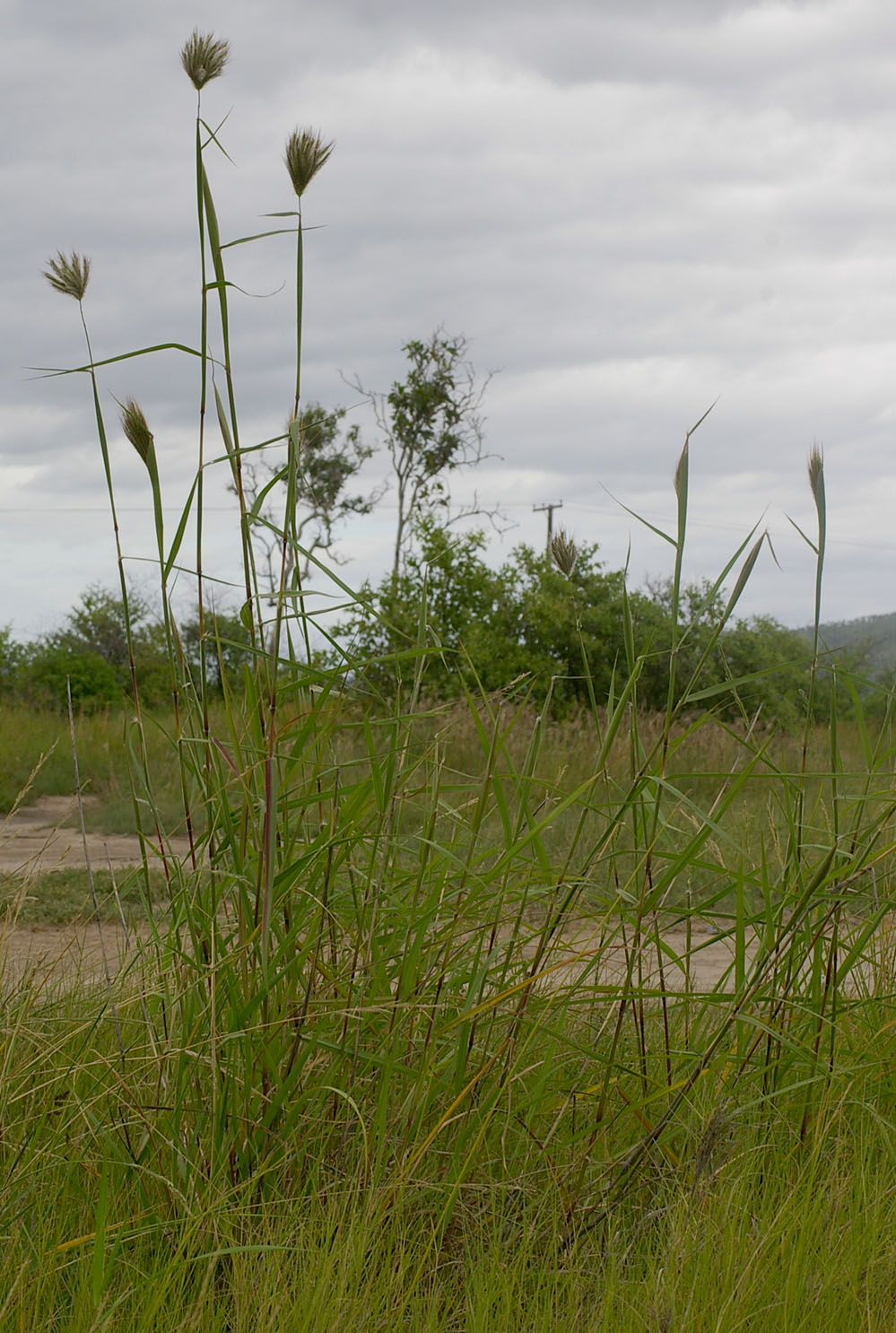
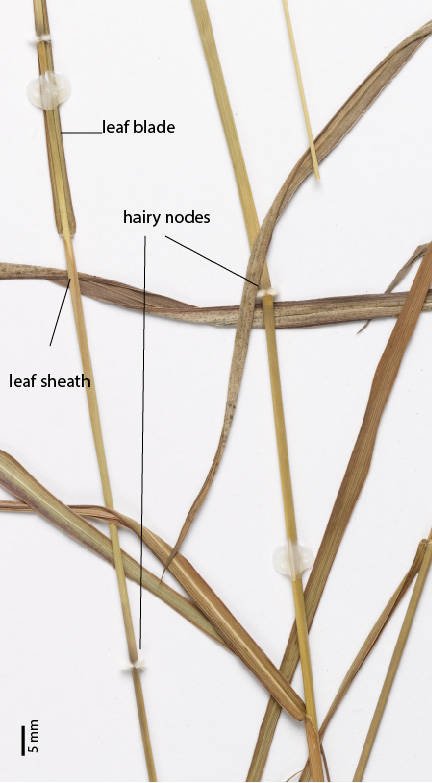
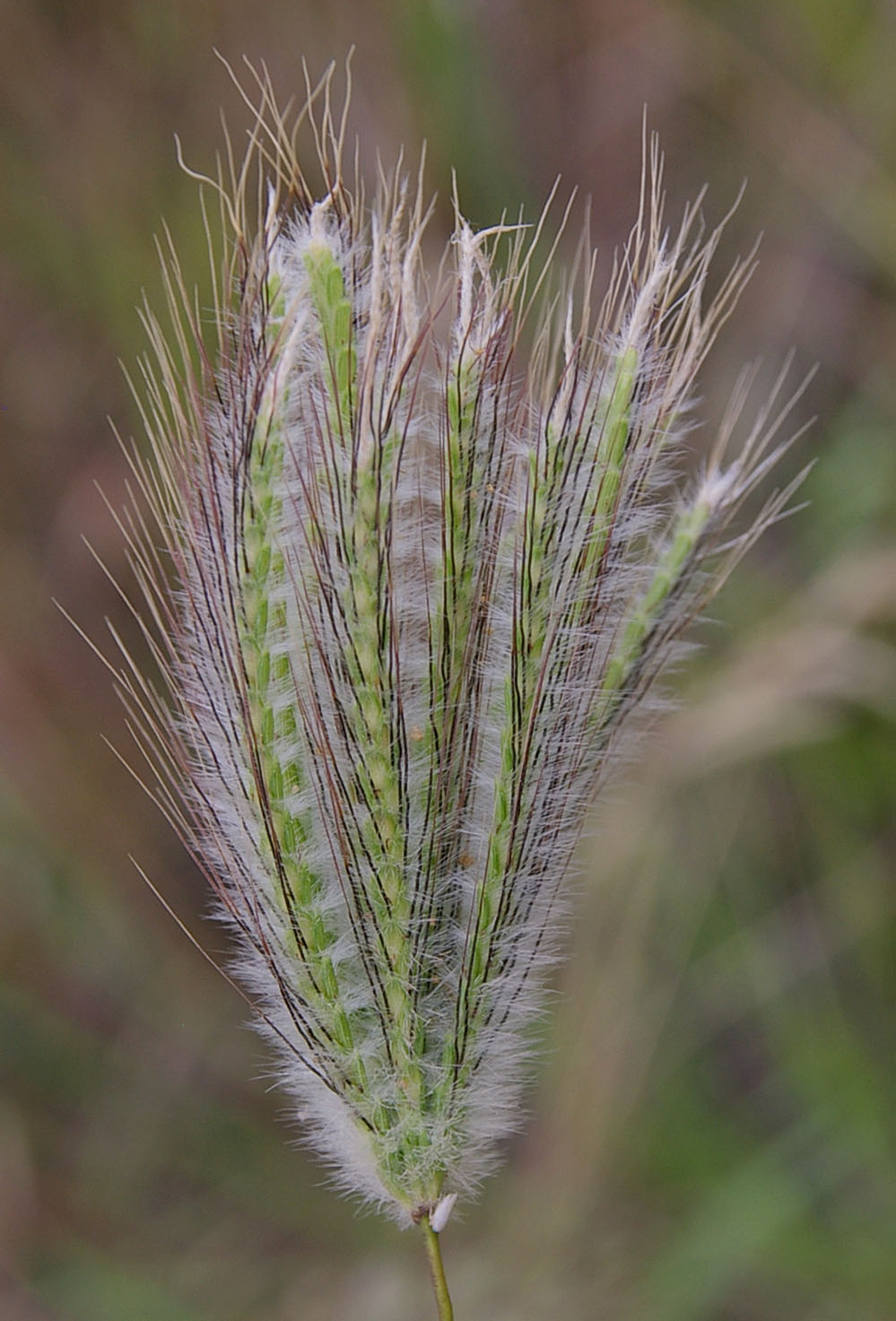
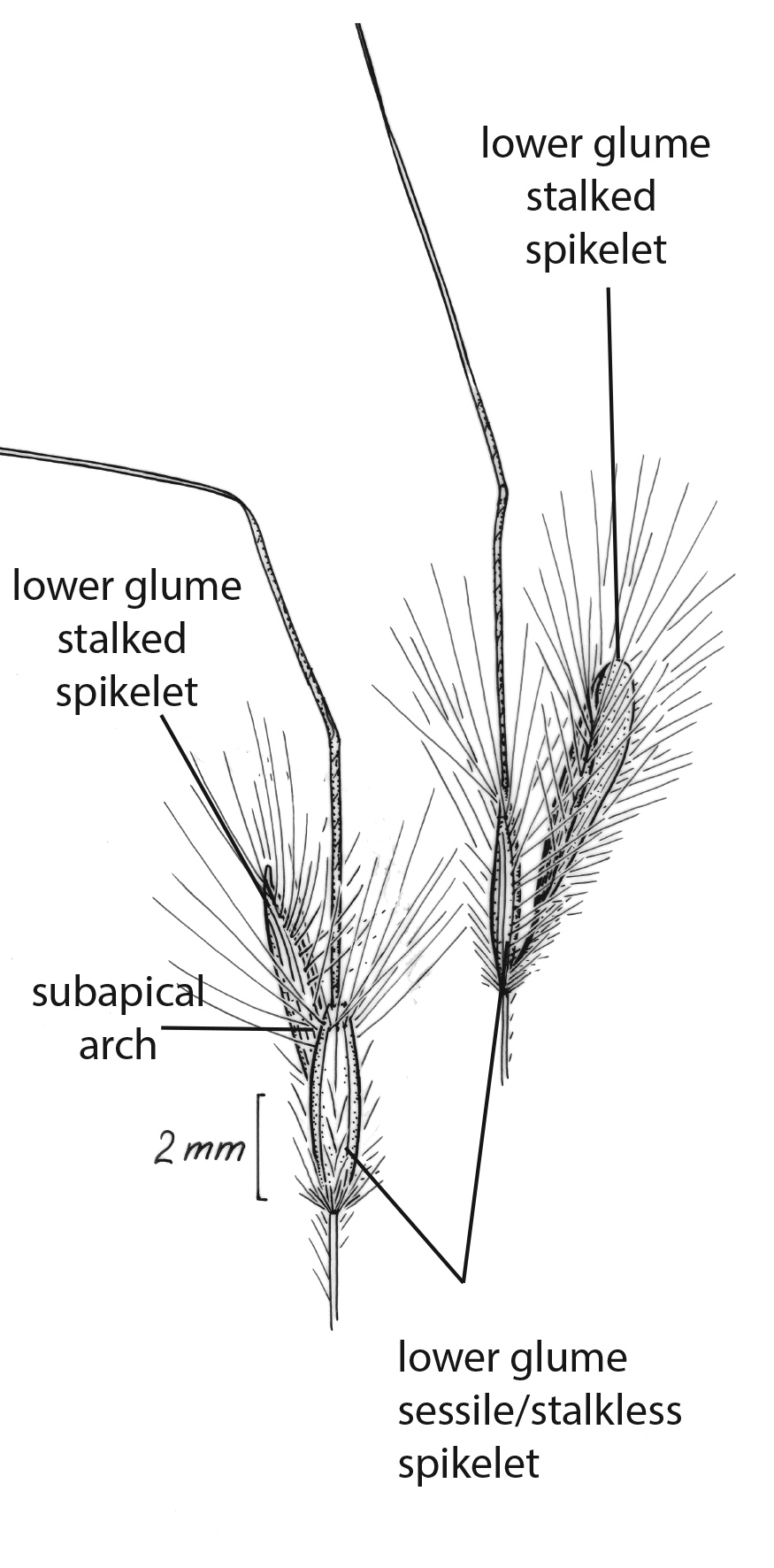
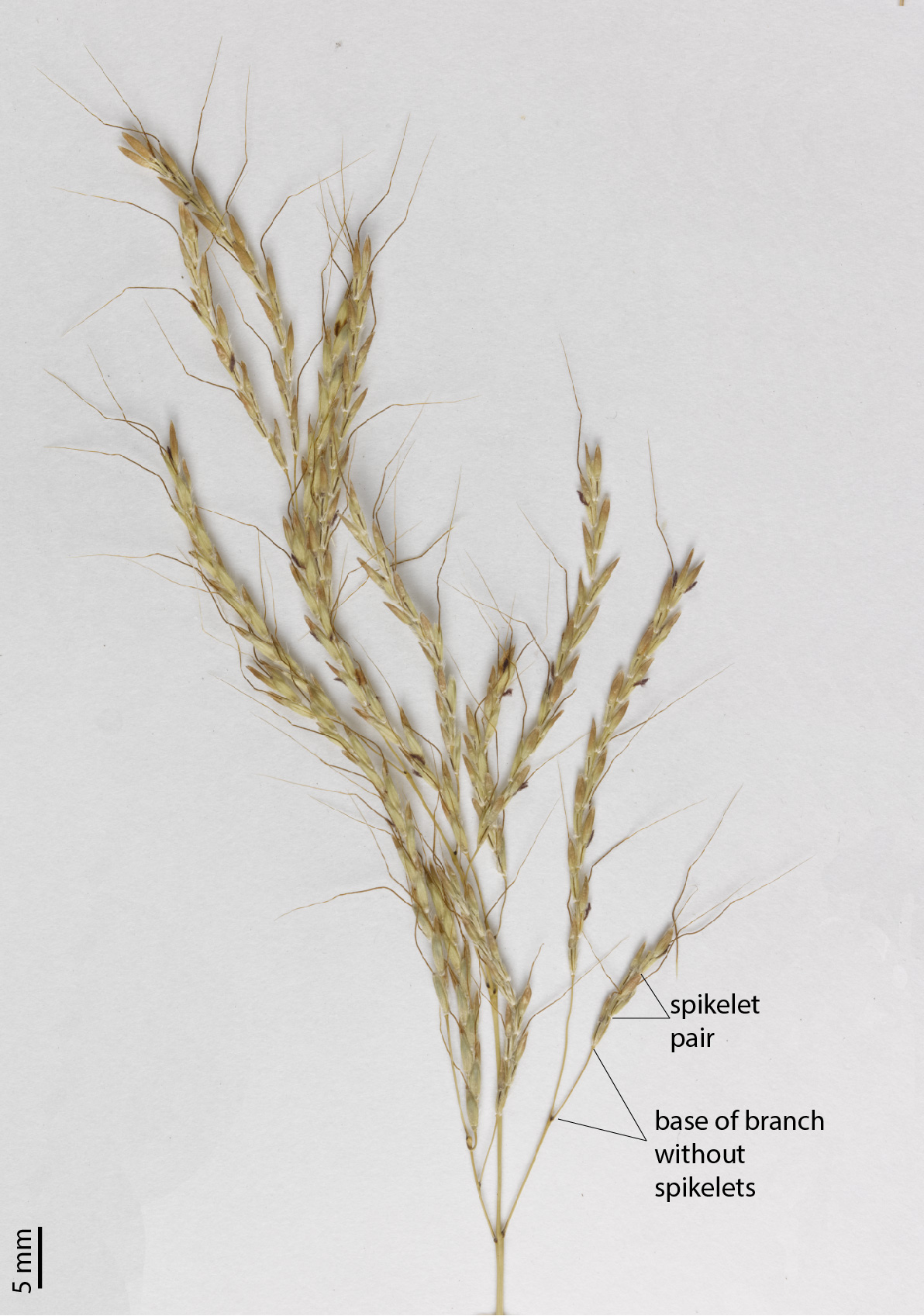
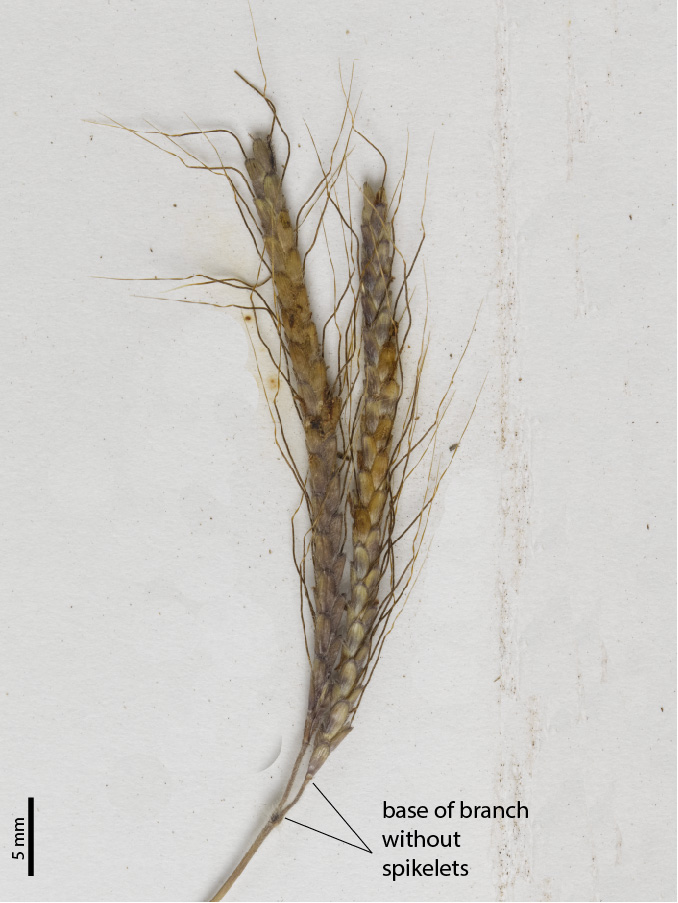
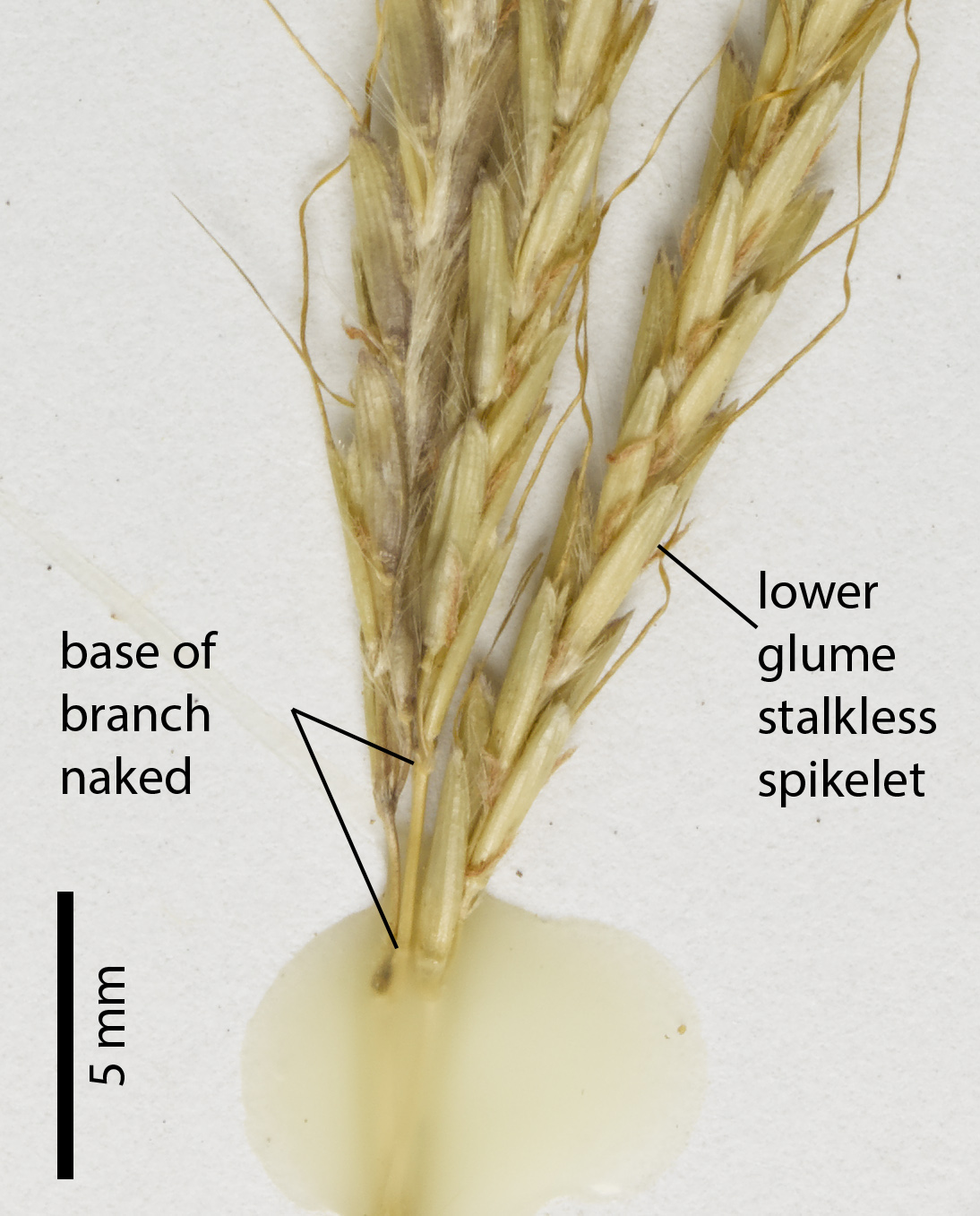
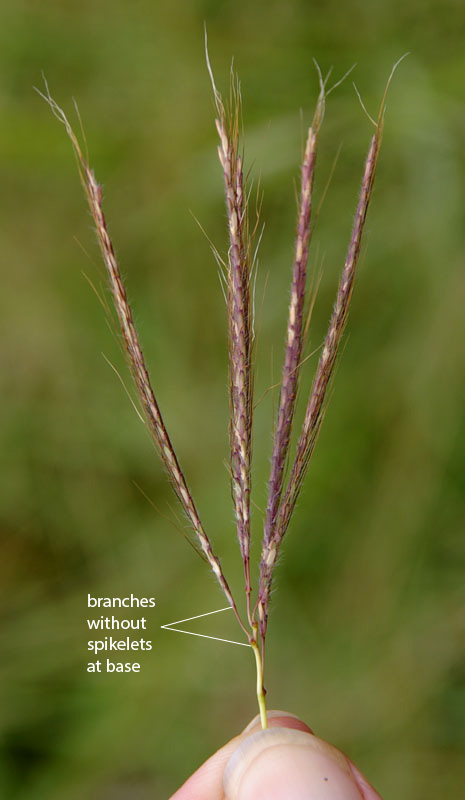
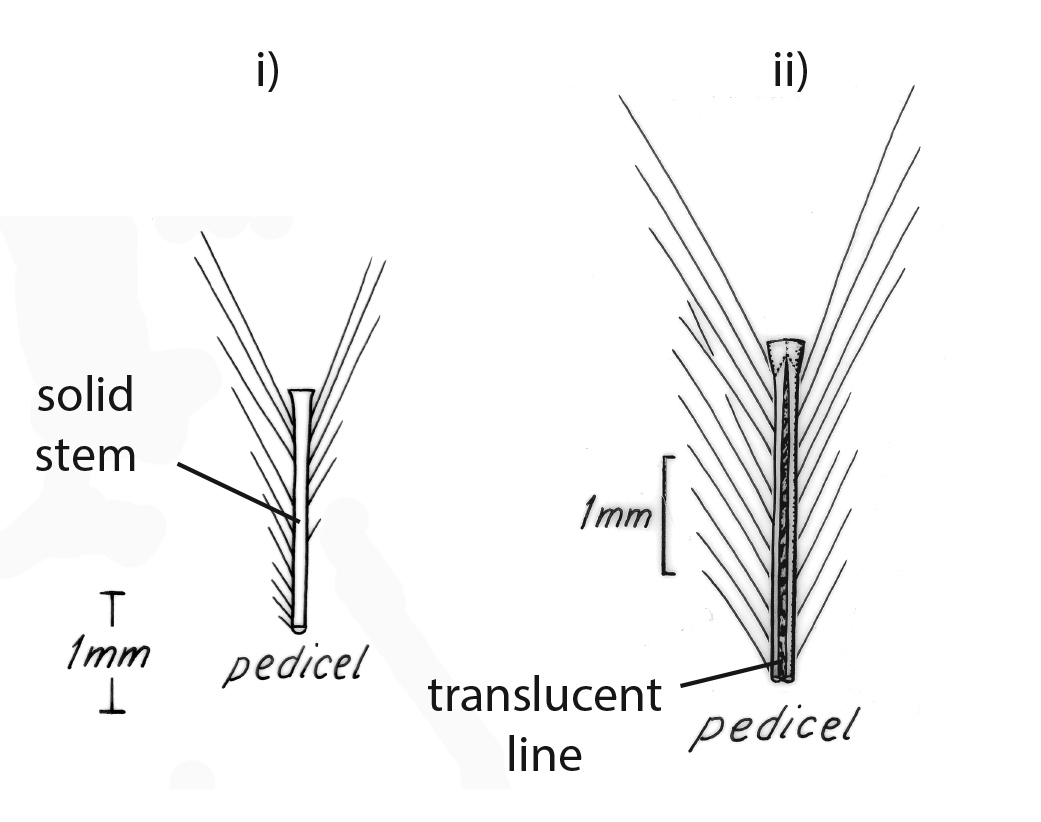
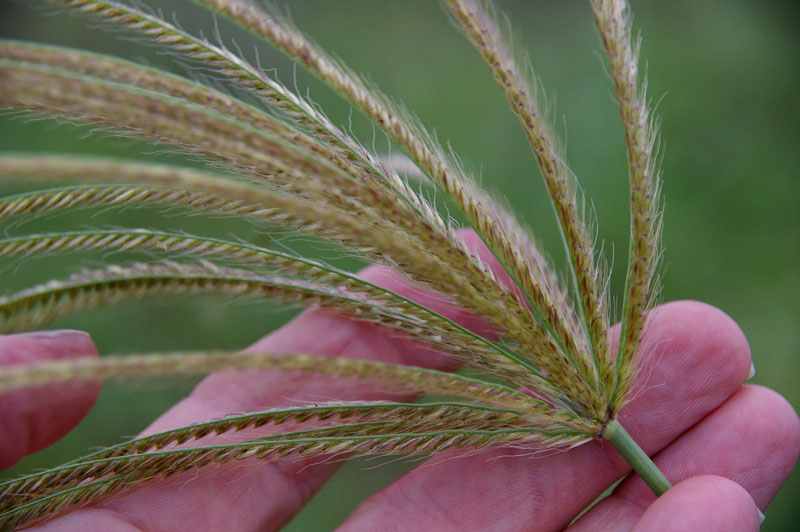
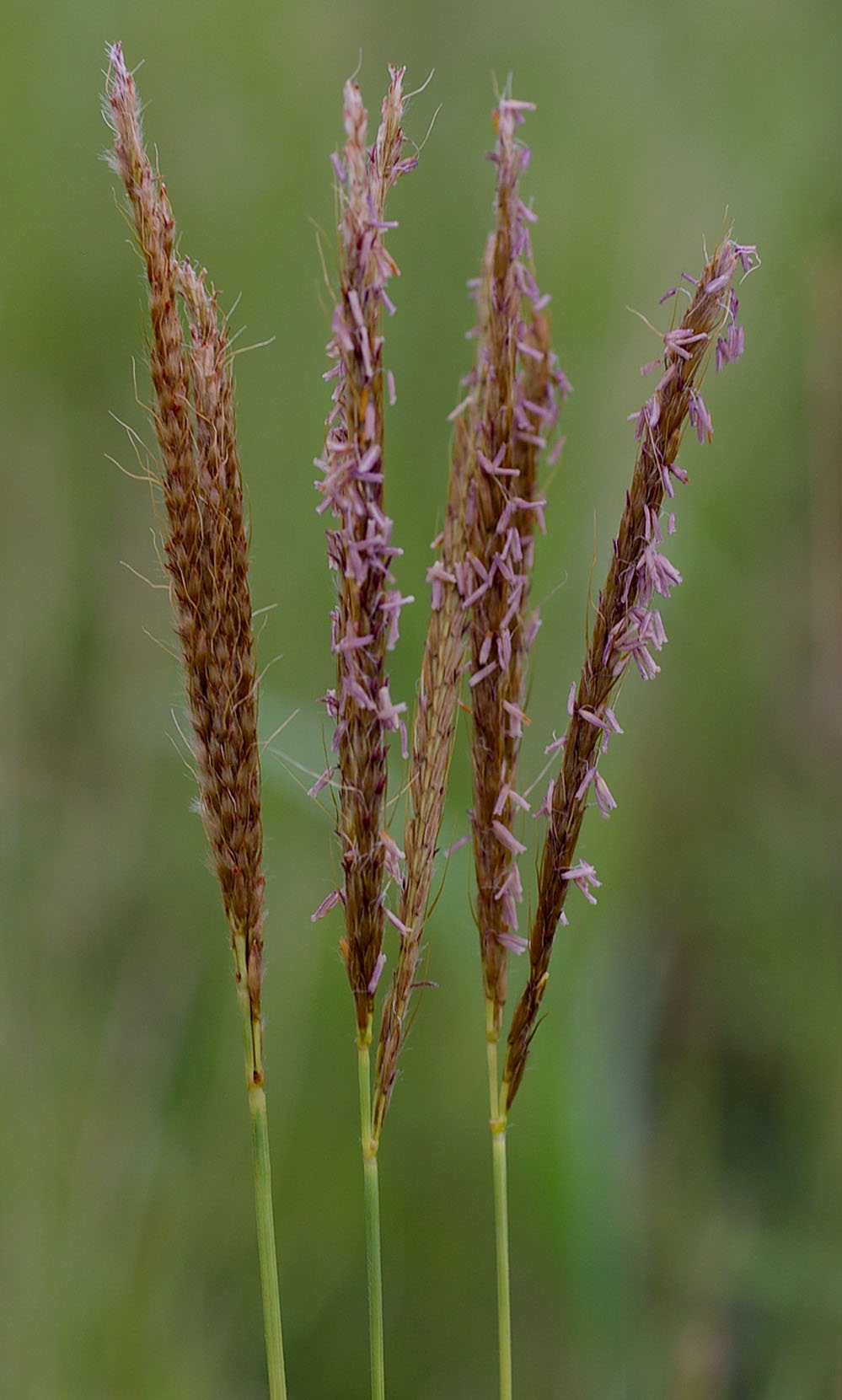
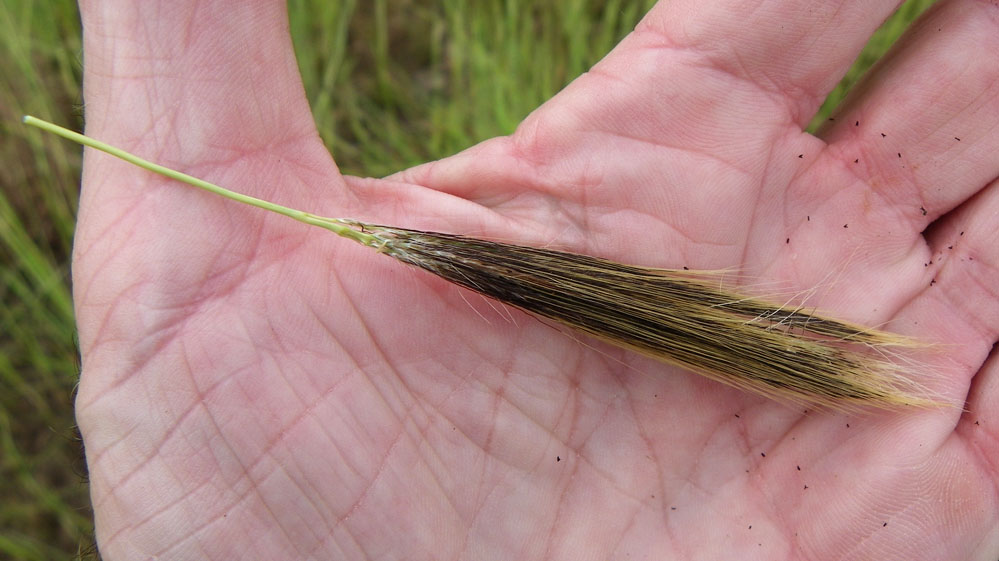
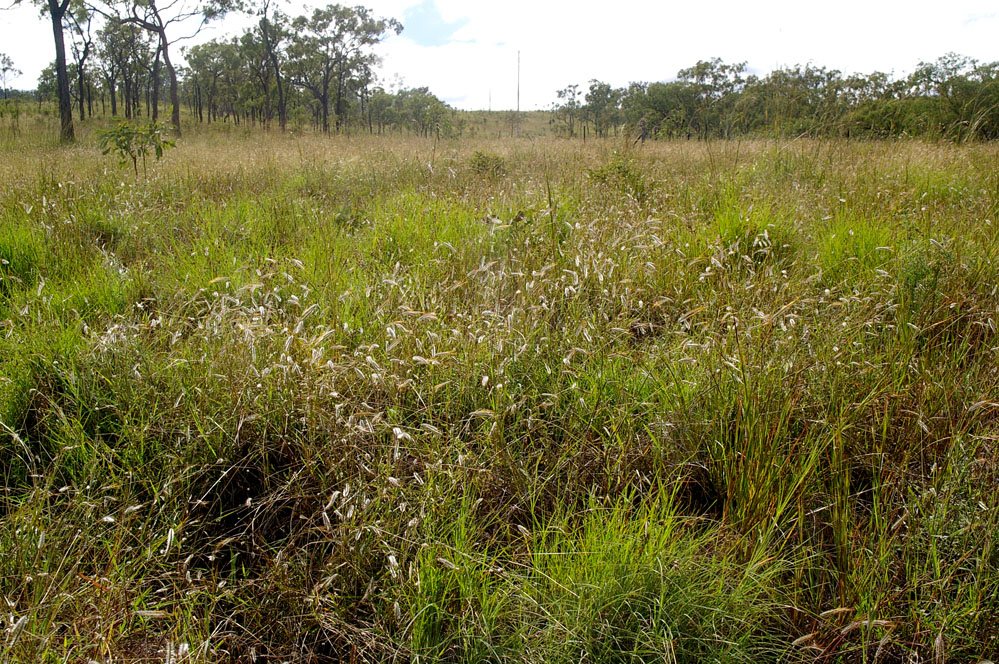
Resources
Factsheets with information regarding management of this species can be found at the following websites:
https://www.dpi.nsw.gov.au/agriculture/pastures-and-rangelands/rangelands/publications-and-information/grassedup/species/bluegrass
http://www.tropicalforages.info/key/forages/Media/Html/entities/dichanthium_sericeum.htm
AVH (2017) Australia’s Virtual Herbarium, Council of Heads of Australasian Herbaria, <http://avh.chah.org.au>, accessed 30 May 2017.
Cowie, I. D. & Short, Philip S. & Osterkamp Madsen, Monika, (2000). Floodplain flora : a flora of the coastal floodplains of the Northern Territory, Australia. Flora of Australia Supplementary Series Number 10. Australian Biological Resources Study: Canberra.
Simon, B.K. & Alfonso, Y. (2011) AusGrass2, http://ausgrass2.myspecies.info/accessed on [date 29 March 2017].

